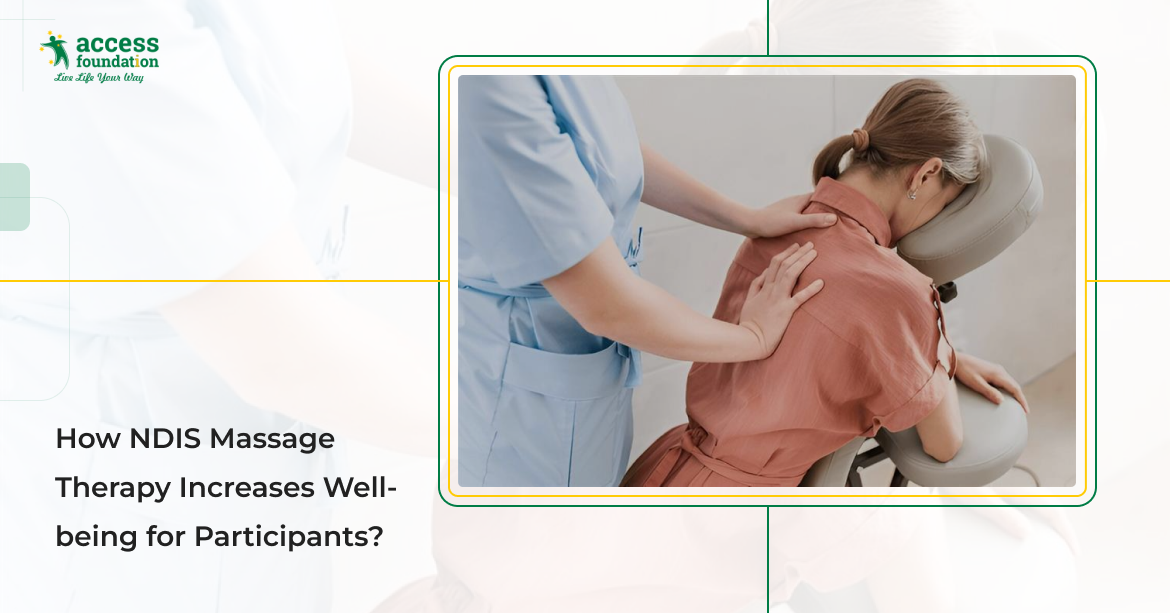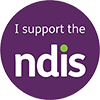
How NDIS Massage Therapy Increases Well-being for Participants?
NDIS massage therapy provides an effective way for participants to improve their well-being, handle pain, reduce stress, and improve physical and mental health. It is a tailored approach that helps individuals achieve their NDIS goals, leading to a more independent life. If you plan to access this support, then you need to first understand your needs, find qualified therapists, and include them in your NDIS plan.
But, before moving forward, it's wise to understand what exactly massage therapy is under NDIS, and how it can make a real difference in your life. We have covered key prospects of this NDIS service for you. So let's dive in and explore.
Understanding NDIS Massage Therapy by NDIS
NDIS massage therapy is not just about receiving regular massage service to feel good; It is a concentrated approach to health and welfare. It includes skilled professionals who specifically provide medical massage designed to meet the physical and mental health requirements of NDIS participants. From reducing chronic disadvantage to increasing mood, this type of therapy provides a comprehensive route to feel better and achieve your NDIS goals.
What Makes NDIS Massage Therapies So Helpful?
Massage therapies offer NDIS participants a wide array of advantages that directly help them on their journey to achieve greater independence and a higher quality of life. Here's how it helps them lead a less stressful and better life:
Pain relief: Lots of people who live with disabilities deal with ongoing pain. It varies from long-term health issues, old injuries, or even just tight muscles. NDIS Massage therapy can really help ease this discomfort. Working on the soft tissues helps relax those tight spots and improves blood flow to the areas that hurt.
Better Circulation: Good circulation is important for general health, especially for people with limited mobility. NDIS Massage therapy actively improves blood flow throughout the body. This better circulation means that more oxygen and nutrients reach the muscles and tissues, promoting healing and reducing inflammation.
Also Read: NDIS Supports for Children with Early Intervention Explained
Stress Reduction: Living with disability can be incredibly stressful, and affects both mental and physical well-being. Massage therapy provides a sharp fire for stress. The cool touch and focus under increased pressure help to promote low stress hormones, deep discounts.
Promoted Mental Health: Massage benefits affect mental health, beyond physical. Massage sessions can help reduce anxiety and depression symptoms. The release of endorphins, natural mood enhancers, during a massage can make you feel more positive and lifted.
Support for Physical Therapies: For those undergoing other physical therapies, massage can be a fantastic complementary treatment. It helps ease soreness after other therapies and can actually make your recovery program more effective.
Better Movement and Flexibility: Many people supported by the NDIS face difficulties with limited movement and stiffness. Massage therapy tackles these issues head-on by gently stretching and working on the muscles and joints.
Improves Sleep Quality: Getting good quality sleep is critical to overall health and well-being; yet, many people with disabilities struggle with sleep problems. Massage therapies can significantly improve sleep quality by promoting relaxation and easing pain and discomfort that might disrupt your rest.
Major Conditions NDIS Massage Therapy Helps With
It's important to remember that NDIS massage therapy isn't a single treatment for everyone. It's actually a very flexible approach, tailored to address the unique physical and mental situations and challenges faced by NDIS participants. This includes things like:
Chronic Pain: Massage sessions of the NDIS provide a practical approach to pain management. This includes techniques such as repair massage that targets deep muscle tissue, releasing knots and stress that contribute to the ongoing discomfort.
Post-Surgical Recovery: After surgery, the body requires time and support to heal. Massage sessions can be a vital therapy in surgical recovery. This helps reduce inflammation, reduce the formation of scar tissue, and improve circulation on the surgical site, which speeds up the healing process.
Headaches and Migraines: For many people, headaches and migraine are a recurring nightmare. Massage therapies by NDIS, especially focusing on the neck, shoulders, and head, can be incredibly effective in reducing the frequency of these painful times.
Lymphatic Drainage: This type of massage is a special, soft technique that encourages the natural drainage of lymph, which leads the waste products back to the heart. This therapy is specifically beneficial for individuals with lymphoma, a condition that is often caused by damage to the lymphatic system, causing inflammation.
Myotherapy (Muscle Pain): Myotherapy is a targeted form of physical therapy that treats musculoskeletal pain, injuries, and movement restrictions. For NDIS participants, myotherapy can lead to better mobility, pain management, and management of daily tasks, which can contribute significantly to their general welfare and freedom.
How to Access NDIS-Funded Massage Therapy
Accessing NDIS massage therapies, funded by the NDIS, might seem a bit challenging at first, but it is a direct process designed to get you the necessary support.
Define Your Requirements: First, it's important to understand how regular massage sessions might make your daily life better, allow you to take part in more activities, or simply help you feel more comfortable and at ease.
Find a Qualified Therapist: When you first know what you want, the next step is to find a therapist who is qualified and experienced in working with NDIS participants. Look for therapists who understand the NDIS structure and provide specific types of massage that will be of use to you, such as repair massage, myotherapy, or lymphatic drainage.
Include It in Your Plan: During your NDIS planning meeting or a NDIS Plan Management review, discuss your need for massage therapy with your NDIS planner or support coordinator. Explain how massage therapy will help you achieve your NDIS goals. It would be best to provide any recommendations or reports from healthcare professionals if you have them.
Monitor Progress: After you start receiving NDIS-funded massage therapy, it's important to keep track of your progress. Monitor how the sessions are helping you achieve your goals. Keep records of your appointments, the type of massage received, and how you feel afterward.
Ending Note
NDIS massage therapy is more than just a treatment that leads to a better quality of life for NDIS participants. Addressing physical discomfort, reducing stress, and increasing overall well-being allows individuals to continue their NDIS goals with greater ease and confidence. Remember that taking responsibility for your health and getting the right support is an independent and powerful step towards your entire life.
If you think that massage therapy can be of use to you, you can start a conversation with your NDIS planner today. Your journey to feel better and achieve your personal milestone is good.
Frequently Asked Questions (FAQs)
1. Do all NDIS plans cover massage therapy?
No, not all NDIS plans automatically cover massage therapy. It must be specifically included in your individual plan, based on how it helps you achieve your NDIS goals.
2. Do I need a referral for NDIS massage therapy NDIS?
While not always strictly required, a referral or recommendation from a healthcare professional can greatly support your request to include massage therapy in your NDIS plan.
3. How many times can I get NDIS massage therapy through NDIS?
The frequency of your NDIS-funded massage sessions depends on your personal needs and goals, as mentioned and approved in your NDIS scheme.
4. Can I choose my own therapist?
Yes, you can choose your own worthy massage therapist, as long as they are a registered provider and their services align with your NDIS scheme.

